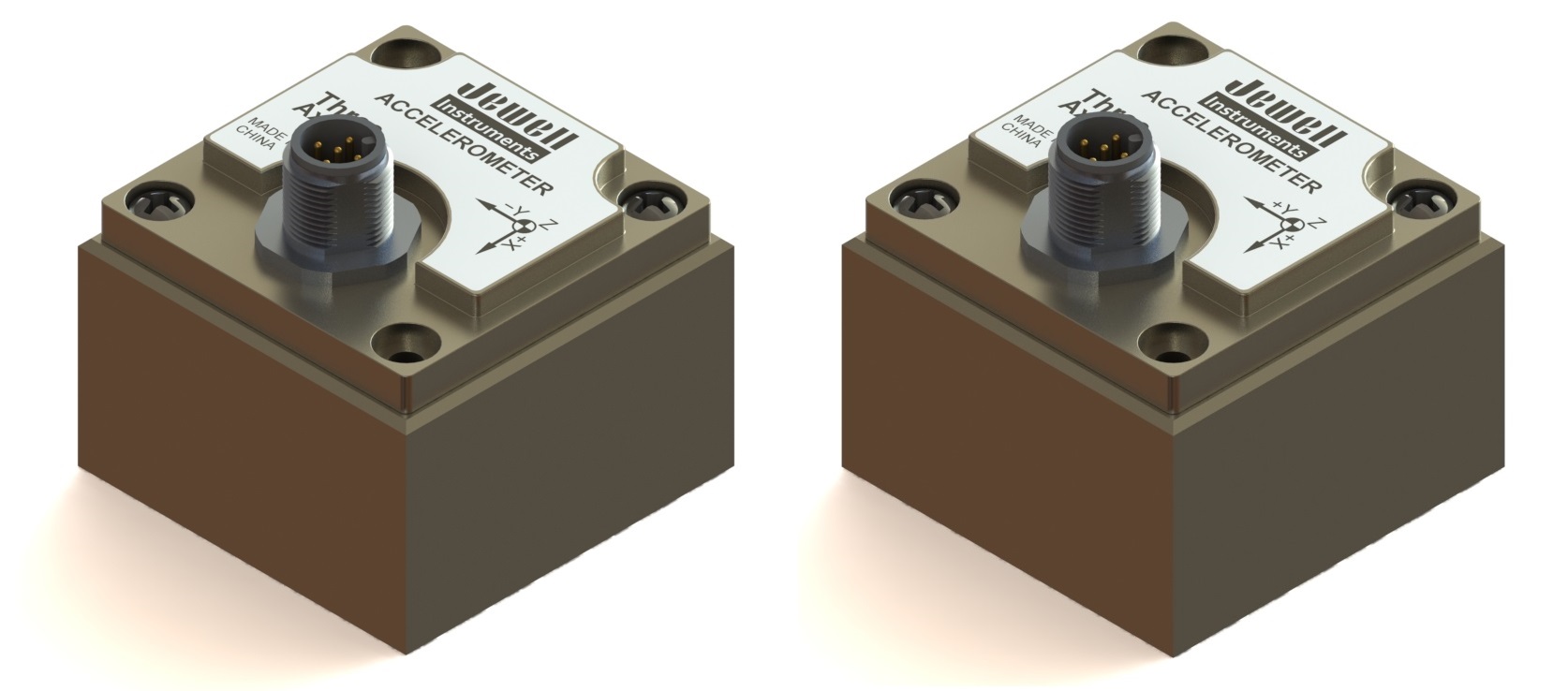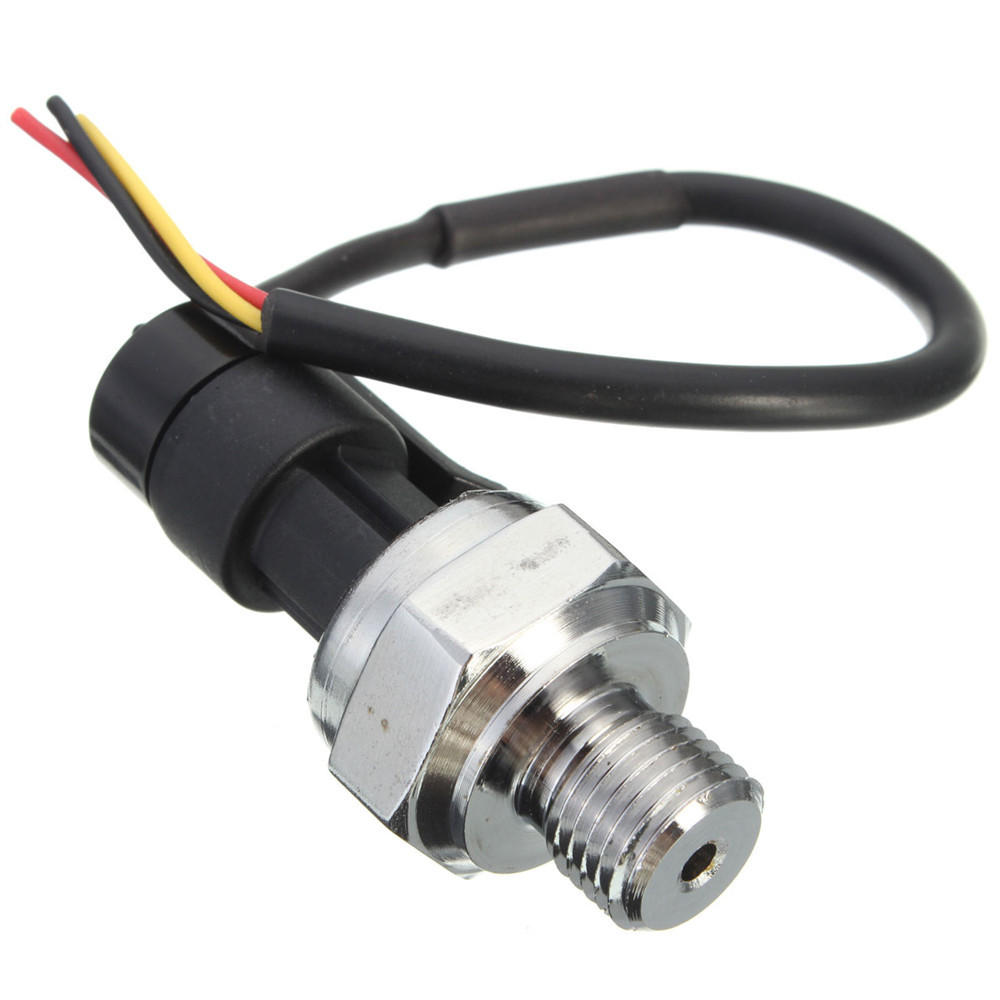Water Pressure Transducer: Selecting and Specifying Accelermotors
7 Specifications for Water Pressure Transducer Accelerometer
Water pressure transducer plays a vital role in the control and data acquisition systems used in various processes employing water either as a primary process fluid or as a secondary fluid.
An accelerometer is an essential component of a water pressure transducer. But choosing the right accelerometer according to your application is imperative. If the accelerometer specifications do not align with your system's requirements, you may not be satisfied with your transducer's output.
You May Also Read: Introduction To Water Tank Pressure Sensor
This article explains what a transducer and an accelerometer are. Then it discusses some standard specifications of an accelerometer and its selection criteria.
Water Pressure Transducer
A water pressure transducer is a device that measures the pressure of water in a system. It converts it into electrical signals before transmitting it over to a remote or local receiver.

A water pressure transducer contains an electronic sensor-accelerometer- with a diaphragm that has a strain gauge. When the system fluid exerts pressure on the sensor, the diaphragm deflects. This deflection leads to a change in electrical capacitance or resistance in the circuit, which the transmitter transfers in electrical signals.
The change in capacitance or resistance is proportional to the applied system pressure. Thus, the users can easily configure the transducer signals and read them in terms of pressure at the controller end.
All pressure transducers generate output in 3 forms: millivolt, volt, or mA. After the control system receives the electrical output, it translates it back into standard pressure units such as PSI or Pa, or other parameter units.
What is an Accelerometer, and What Does it Do in a Pressure Transducer?
An accelerometer is a small but smart electronic sensor. It measures the acceleration of a system from the vibrations that it receives and translates it into desired variables such as velocity, flow rate, pressure, etc.
Physics defines acceleration as force per unit mass. So, in a water pressure transmitter, the accelerometer comes in contact with the acceleration of flowing water. This acceleration exerts some force on the accelerometer. And the accelerometer then converts this mechanical stress into an electrical signal using its piezo-sensing technology.
The pressure is force per unit area, so we can easily calibrate the pressure transducer to translate the accelerometer measurements into pressure.
Types of Accelerometer
An accelerometer uses piezo-sensing technology to detect vibrations or shock waves in a system.
Piezo-sensing technology induces an electrical charge in response to mechanical pressure.
There are three basic types of piezo-sensing materials that accelerometer manufacturers commonly use with their devices. Each type has its applications where it performs most efficiently.
Piezoelectric Accelerometer
A piezoelectric accelerometer works based on the piezoelectric effect.
The piezoelectric effect is the generation of electricity when a system applies any mechanical stress over the material.
Piezoelectric materials generate a certain amount of charge when the system applies pressure on them. This charge is proportional to the applied force and dissipates quickly when the pressure is removed. Thus, these materials work efficiently on accelerometers that have to measure quick-changing pressures.
There are two types of piezoelectric materials used in accelerometers for water pressure transducers. These types include a single crystal or quartz and ceramic piezoelectric materials.
Single crystal piezoelectric materials, like quartz, are more durable but less sensitive to the system's changes. While ceramic piezoelectric materials are highly sensitive to alterations in system parameters, but they are susceptible to wear.
Piezoresistive Accelerometer
Piezoresistive accelerometer produces a change in the electrical resistance on the application of mechanical stress. This change in resistance is then transferred to the control system and read as the pressure.
In piezoresistive accelerometers, resistors are arranged in a Wheatstone bridge configuration. This configuration converts a small change in resistance into a substantial output voltage signal.
Piezoresistive accelerometers are less sensitive. So they do not perform too well in systems that require high sensitivity. However, they offer good long-term stability and have good resistance against shock and pressure spikes.
Capacitive Accelerometers
A capacitive accelerometer is the most commonly used type of accelerometer. It shows a change in electrical capacitance when system pressure changes.
The capacitive accelerometer is highly sensitive and can measure a wide range of pressure, from as low as 250 Pa to as high as 70 MPa. For reference, the atmospheric pressure is 101325 Pa or 0.1 MPa.
Moreover, unlike piezoresistive sensors, these accelerometers can measure pressure over a wide range of temperatures as well.
How to Choose the Right Accelerometer?
Now that you have gathered some information about water pressure transducers, accelerometers, and their types, you may want to look into the selection criteria for an accelerometer.
Following are some of the critical specifications of an accelerometer that one must consider for making an informed buying decision.
1. Accelerometer Type
We have discussed the three basic types of accelerometers. You must have a thorough understanding of each kind of accelerometer so that you can understand which one will fit perfectly in your system.
Piezoelectric accelerometer offers a broad pressure measurement range and is sensitive to system pressure. It can withstand extreme temperatures and harsh operating conditions.
However, piezoelectric materials are only fit for dynamic systems. So, if you have a flowing water system, consider getting a piezoelectric accelerometer for your water pressure transducer.
Piezoresistive accelerometers are best for shock measurements but are not very suitable for vibration measurements. Thus, suppose you wish to use your water pressure transducer underwater to monitor sea waves, piezoresistive material might be the right choice.
Capacitive accelerometers can operate over a wide range of temperatures and can withstand short pressure overload. So, if you expect temperature variations and pressure spikes in your system and want a low power device, the capacitive accelerometer is for you.
2. Accelerometer Shock Limits
The accelerometer's shock limits define how much shock or a sudden spike in pressure it can withstand. For an accelerometer that performs for a water pressure transducer, the shock limits must be broad. In almost all dynamic water systems, sudden spikes in pressure are usual and expected.
3. Measurement Range
Determine the acceleration range in your system, at what rate the velocity of flowing water changes. Then get an accelerometer that can generate accurate output for your range of input acceleration and make sure that there is a margin between your system's maximum and the accelerometer's full capacity to compensate for circumstances where the load may increase.
4. Sensitivity
An accelerometer's sensitivity is the change in the output signal generated when the input changes slightly. Decide whether you need a highly sensitive accelerometer or a low sensitivity accelerometer for your system.
5. The nonlinearity of the Device
Under ideal circumstances, a unit step-change in the input must introduce a unit step-change in output and maintain a constant sensitivity. However, we live in an imperfect world. Nonlinearity is the deviation of the device measurement from continuous sensitivity.
Make sure to check your Device's nonlinearity to get satisfactory results from your water pressure transducer.
6. Accelerometer Packaging
Accelerometer packaging is a critical consideration, especially when selecting a device for a water pressure transmitter, as it will be in constant contact with water. And water can contain some harsh contaminants such as salt or small concentrations of acids.
Make sure you get an accelerometer with stainless steel or plastic packaging that protects it from getting corroded from water and its contaminants.
7. Operating Temperature Range
In almost all water systems, the temperature is never constant. So, for your water pressure transducer to keep functioning correctly, you must get an accelerometer that can measure accurate pressure over fluctuating temperatures.
You May Also Read: How Differential Pressure Transmitter Measure Level?
Conclusion
An accelerometer is a smart pressure sensor on your water pressure transducer that can measure slight variations in system pressure and augment your process control system with it.
There are three types of accelerometers. Each type has its strong and weak points that fit some applications but are unsuitable for others.

Moreover, accelerometers have a wide range of specifications that one must consider before buying the Device. These specifications include, but are not limited to, accelerometer type, its operating pressure, and temperature range, linearity, and sensitivity.
Having a comprehensive knowledge of these specifications and the relevant system variables will ensure that you get the best accelerometer for your water pressure transducer.
















